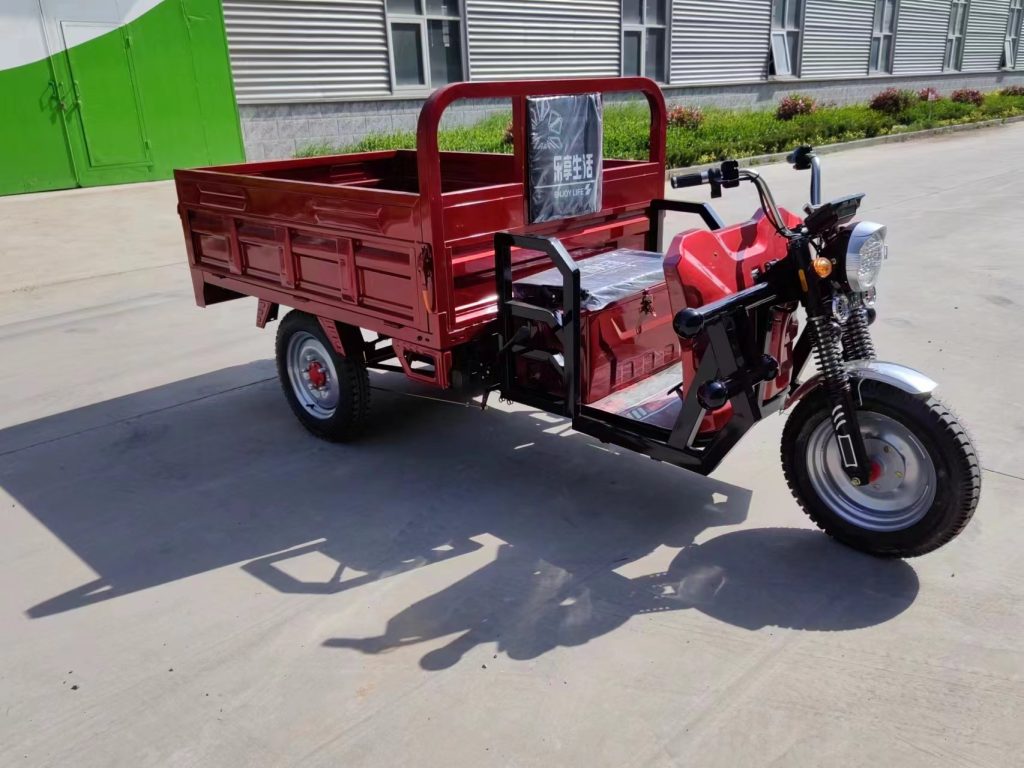China’s electric three-wheel motorbike industry has been performing well in its prime era in China over the past few years. Special-purpose motorbikes, motorbikes tricycle electric or motorbikes trike electric, to mention some of the common colloquial terms that have been employed to define their China electric motorbike tricycles, have been a blessing for rural and urban China. Domestic sales of electric trikes have crossed 5 million units in 2022, a 23% increase over the previous year, as per the China Association of Electric Vehicles. This is because they are transforming China’s evolving transport needs and green and making it economical as well. Let’s discuss drivers of growth and foretell the future outlook of this rapidly growing venture.
Market Drivers and Growth Factors
1. Economic Adoption Needs
The electric trike motorbikes are low-priced, with incredibly valuable cost savings, and are in demand by consumers and businessmen. The electric trike motorbike will operate for approximately 0.15 RMB per kilometer, whereas gasoline trikes operate for approximately 0.6 RMB per kilometer. The 75% cost savings made it a leading bestseller among:
- Small business goods delivery
- City food delivery logistics companies
- Rural villages
Market frontrunners Jiangsu Xinri E-Vehicle and Shandong Wuzheng Group achieved 30-40% year-on-year expansion in China electric motorbike tricycles since 2020. The extremely low cost of 4,000-8,000 RMB is in sync with China’s vast working and middle-class mass purchasing power.
2. Policy Support to Market Acceleration
The entire government support system in China has lent a helping hand to the craze of electric three-wheel motorcycles. Policy interventions that have been a clincher are:
- Up to 1,500 RMB vehicle purchase subsidy
- Waiver of license plate quota in Tier-1 cities
- Low-interest loans for fleet vehicle operators
These policies complement China’s double carbon policies and have already gained more than 65% of the three-wheeler market share in electric trike motorbikes. Provincial cash subsidy programs, where citizens have been encouraged to exchange old, smoke-spewing models with new electric models, also support demand stimulation.
3. Technology Development Goes Mainstream
Several other technology upgrades have transformed the Chinese electric motor tricycle market:
Battery Technology:
- Lithium-ion battery per charge: 120-150 kilometers
- 2-hour fast charge (80% capacity)
- The battery maintenance cycle is 5 years
Smart Features:
- GPS location tracking systems are being used
- Mobile app interface-based battery monitoring
- It sends an alert through a smartphone with an anti-theft alarm
Each of these technologies has revolutionized customer satisfaction innovations and has been launched from first cargo delivery to passenger transport, to mobile retailing.
Market Segmentation and Usage Patterns
Electric motorbike riders have developed niche-differentiated niches for meeting niche functions:
1. Commercial Logistics (45% market penetration)
- E-commerce pioneer: end-mile delivery solutions
- Urban waste collection vans
- Portable workshop platforms
2. Passenger Transport (30%)
- School shuttle solutions
- Senior mobility solutions
- Rural public transportation solutions
3. Specialized Applications (25%)
- Food vending platforms
- Mobile medical clinics
- Support agricultural vehicles
Mass producers now have electric trike motorcycle platforms that they can customize to such varying applications, and the entrepreneur is in a titanic class of industries.
Industry Development and Competitive Position
There are over 200 operators present in the China e-motorcycle and e-tricycle market, and the combined market share of the top 10 companies stands at about 60%. These are:
- Jiangsu Xinri E-Vehicle – 18% market share leader
- Shandong Wuzheng Group – They trade in heavy-duty ones
- Zongshen Electric Vehicle – Urban luxury niche filler
Industry consolidation is happening as larger firms buy out small rivals to expand distribution channels. In the meantime, players are trying to monopolize niches such as the refrigerator loads and on-road charging stops.
Challenges and Future Prospects
Albeit the enormity of the electric three-wheel motorbike market opportunity, there are particular challenges to be addressed:
- Battery Recycling Infrastructure – Roll-out of recycling networks
- Safety Standards – Take-up of national standard safety parameter
- Urban Access Policies – Urban access rule harmonization
Against all odds, market analysts forecast the sector to expand at a 9.2% CAGR to 2030 with probable annual sales of 8 million units. The highest growth prospects are:
- Development of emerging economy exports
- Research and development of swappable batteries
- Smart city infrastructure interoperability
Conclusion
It is a dream of an environmentalist, a bonanza for the economy, and a technological revolution. Battery technology is improving rapidly, and electric motors are becoming more available, so China’s electric three-wheelers are just one part of the country’s transportation network.
For entrepreneurs, they are an income-producing opportunity. For municipalities, they are environmentally friendly and clean transportation. And for the world, and China specifically, they are another story of the triumph of the e-mobility world. Three wheels can be created by the best through sustainability, and the future is electric.
Do you want to know how to use or run electric three-wheeled motorcycles for or by your company? China unleashes the future of green high-efficiency transport.

 Instant
Quote
Instant
Quote Email
Us
Email
Us